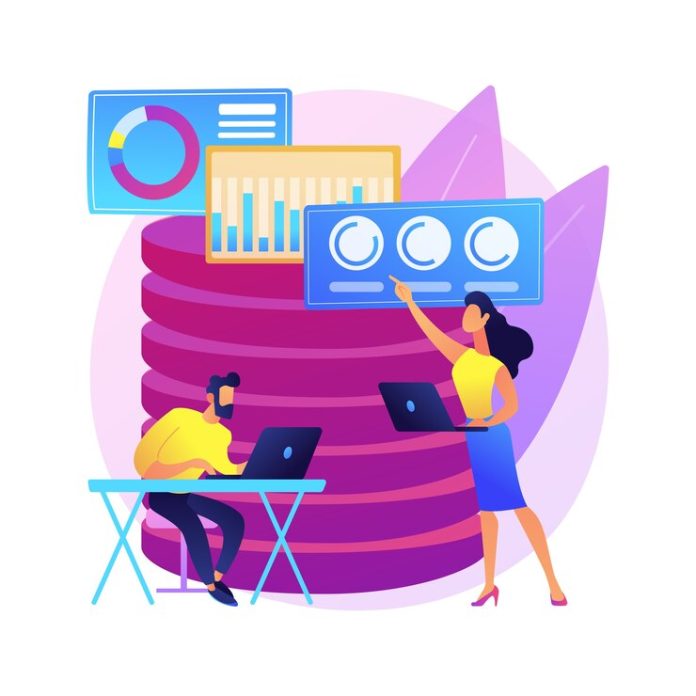In the vast, data-driven universe of today, comprehending the idiosyncrasies of data analysis and data mining proves indispensable. Both are catalysts for extracting insightful gems from colossal datasets but differ remarkably in their strategies and objectives. This article aims to delineate the distinctions between these two processes, their respective applications, and the benefits they confer.
From a CXO to an IT manager, a decision-maker in a marketing firm or an entrepreneur navigating through web and app development, whoever you may be, this piece promises valuable insights to guide your decisions.
What is Data Mining?
Data Mining is a process that delves into large datasets seeking patterns and relationships. Techniques applied? Machine learning, statistical analysis, and pattern recognition shine here. The objective is unearthing hidden insights for predictive modeling, forecasting future trends or spotting anomalies.
Industries leveraging data mining span sectors from finance to healthcare, retail to manufacturing. It’s a powerful tool; enabling organizations to make decisions grounded in data, streamline processes and pinpoint growth opportunities. But how do companies manage such a daunting task? Look no further than data mining outsourcing firms.
Outsourcing can break down barriers of access to expert resources required for analyzing copious amounts of structured and unstructured data. Collaboration with specialized service providers equips organizations with cutting-edge tools as well as algorithms capable of efficiently gleaning valuable insights from intricate datasets. What’s on offer? Cost-effectiveness paired with scalability and access to specialized knowledge.
What is Data Analysis?
This process scrutinizes raw data systematically: examining it, cleaning it up, and transforming it into meaningful information ready for interpretation. Statistical techniques aid in identifying trends within a dataset while specialized tools shed light on their relationships. Data analysis serves specific purposes, answering pressing questions or solving precise problems across domains from market research to customer segmentation or fraud detection to risk assessment.
Before diving into either data analysis or data mining, it’s paramount to ensure the cleanliness and accuracy of your data. Companies such as data cleansing service providers excel at identifying and rectifying errors in datasets, eliminating inconsistencies and redundancies. By using advanced algorithms and automated processes, they clean, standardize, and validate the data guaranteeing its quality and integrity.
Collaboration with such providers saves organizations precious time and effort that would otherwise be spent on manual data-cleaning tasks while enhancing the precision of their analyses.
Data Mining vs. Data Analysis: Pivotal Differences
Although both aim to distil insights from large datasets, their focuses vary along with their methodologies. Here are some key differences:
- Objective: Data analysis concentrates on decoding trends, patterns, and relationships within a dataset to answer specific questions or troubleshoot problems. Data mining reaches beyond mere analysis; it seeks hidden patterns or anomalies that might elude immediate recognition.
- Data Exploration vs Hypothesis Testing: While data analysis explores existing datasets to draw conclusions or make predictions based on observed patterns, data mining tests hypotheses by seeking unexpected patterns or relationships.
- Tools and Techniques: For data analysis, regression analysis, hypothesis testing, and correlation analysis are often employed for interpretation. However, in the realm of data mining advanced algorithms like decision trees, neural networks or clustering methods reign supreme.
- Scope: Typically dealing with structured information organized into tables or spreadsheets defines the playing field for Data Analysis. But Data Mining? It comfortably handles both structured as well as unstructured sources, from textual documents to social media posts to images – and even videos.
- Applications: While applications of data analysis span domains like marketing finance operations, customer segmentation, fraud detection, recommendation systems, and anomaly detection are some areas where we often find data mining at work.
The Conclusion
Both techniques—data analysis and data mining—are robust tools for extracting invaluable insights from towering datasets. If you are looking for a focus on understanding patterns within sets of information, you’ll want data analysis. On the other hand, data mining prides itself on unearthing hidden insights. By leveraging data mining outsourcing and forming collaborations with data cleansing service providers, organizations can optimize their analytical processes and make decisions that are not just informed but also astute.
In today’s world fueled by data, understanding these techniques’ differences is a prerequisite for tapping into their full potential.













